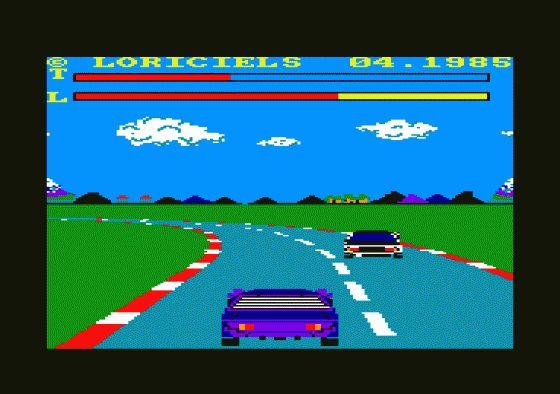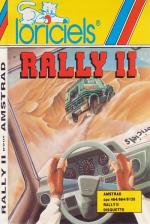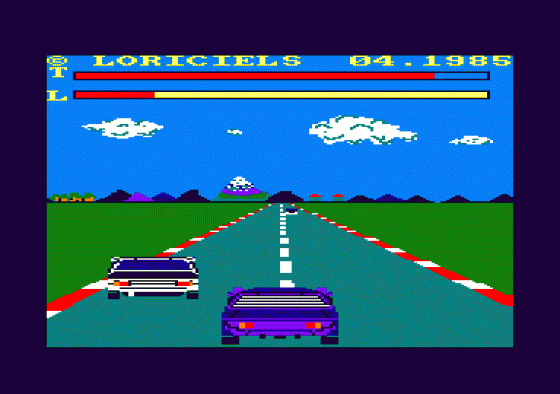
Amstrad Computer User
 1st September 1985
1st September 1985
Categories: Review: Software
Publisher: Loriciels
Machine: Amstrad CPC464/664/6128
Published in Amstrad Computer User #10
Rally II
At last, a half decent car racing game has appeared for the CPC machines, unlike the, dare I say it, diabolical, Grand Prix Driver, this game is very playable and equally addictive. As with any game of this genre, the road is seen snaking off into the distance and your job is to react to the sudden sharp bends and hazards that come towards you.
Unlike some games of this type that are available on other machines, it is not just a case of you against the clock - there are plenty of cars to battle against - they may all look very similar knot unlike white Audi Quattros seen from the back) - but they do wonders to liven the game.
Control of the car is via the joystick_ Left and right are obvious, there is no control, however, over the acceleration.

The car steadily accelerates until either it reaches the top speed (which, thankfully is not unplayably fast) or until the brakes (FIRE button) are used. The best technique seems to be to allow it to reach top speed and continue at that until a tight bend or another car approaches. A little braking while manoeuvering followed by acceleration to top speed out of the bend or past the car will usually do the trick.
Underestimating how tight a bend is causes the car to ride on the red and white striped kerbing for some time - losing valuable time.
Distance to the end of the current stage and the time remaining for the stage are shown by two bar graphs at the top of the screen. The idea is that you should make the full distance before the time runs out. Failure to do so will result in disqualification, while succeeding allows you to go on to the next stage. Too much braking or riding on the kerb will cause the time to ebb away, while, each car passed adds a little to the time remaining gauge. There are nine distinct stages to the game, completing them all will allow access to the high score table.

Having completed the game, one might think, like so many other games, that there would no longer be any challenge and the game would be hidden away in some dark cupboard never to be seen again. This is where RALLY2 really scores when compared with many other games, once you become bored with the game, you can redesign the layouts of each of the stages. Virtually everything is variable: length, number of bends, degree of curvature, left or right, back drops.
Editing is done purely with the aid of the joystick and could not be simpler. The backdrops include 'sunny', 'bridge', 'sea-shore', 'night', 'desert', 'snow' and the fiendish 'fog'. The tracks you design in this way can then be saved to tape. Disc users should note that their tracks are also saved to tape, not disc. This is, however, not a major disadvantage, it does not take very long and saves cluttering up valuable disc space with one million and one old layouts.
The graphics, while colourful, do not push the CPC to its limit but are adequate and obviously necessary to enable fast updating to keep the pace of the game at an exciting level. Thankfully, they do not suffer from frame flyback flicker as is the case in some other highly graphic games.
The sound is there, but, again, it does not set any new standards - it just serves to let you know the rate at which the engine is ticking over, The obligatory naff tune plays between games. I think I would buy this game if it were just a reasonable car racing game, which it is. The track editing, however, really sells it for me.





